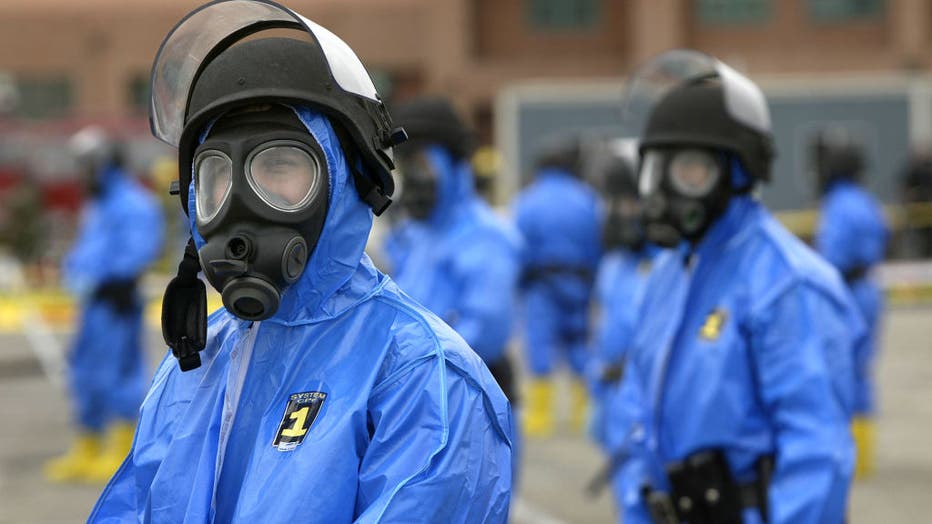Researchers begin human trials for oral drug to protect against dirty bomb exposure
How you should prepare for a nuclear attack
Here are the top few items survival expert Thomas Coyne advised everyone should have in their residence in the event of any kind of natural disaster or even a nuclear fallout situation.
LOS ANGELES - Researchers have begun the first-in-human clinical trial of an experimental oral drug that will hopefully be able to remove radioactive contaminants from inside the body has begun, the National Institutes of Health reported on Monday.
HOPO 14-1 will hopefully be able to be given to people in tablet form and will work against elements that can be used to make dirty bombs.
Dirty bombs are commonly known as explosive devices that are laced with radioactive substances.
If the trials prove optimistic, HOPO 14-1 could be used rather than intravenous methods in the event of an emergency.
The trial will consist of 42 healthy adults, aged 18 to 65, all of whom will be given varying doses of the experimental tablet.
Results from the trial are expected to be published next year.
What is a dirty bomb?
Technically known as radiological dispersion devices, dirty bombs are relatively primitive, imprecise weapons. They are much easier and cheaper to build than a nuclear device and also far less dangerous.
Dirty bombs use conventional explosives, such as dynamite, placed alongside radioactive material, which is then flung outward by the force of the blast. The amount of radioactive material dispersed, while dangerous, is not necessarily lethal.
The material used in the bomb could have been obtained from radioactive sources used in medicine and industry or from research facilities.
"A dirty bomb is really easy to make," says Scott Roecker, vice president for the nuclear materials security program at The Nuclear Threat Initiative, a nonprofit based in Washington. "It’s a crude device."

LOS ANGELES - AUGUST 5: Los Angeles police officers wearing contamination suits secure the area following the explosion of a "dirty bomb" during a simulated attack at a dock at the Port of Los Angeles on August 5, 2004 in Los Angeles, California. In
What damage can a dirty bomb cause?
The number of casualties and the extent of damage from a dirty bomb depends on many variables.
A key factor is the amount and type of conventional explosives that are used, which determine the magnitude of the blast.
The quantity and type of radioactive materials released are other factors, as are weather conditions — and especially the wind — at the time of the blast. A potentially wide area could be contaminated.
Most dirty bombs would not discharge enough radiation to cause death or even severe illness.
Low levels of radiation exposure usually do not cause any symptoms. People may not know whether they have been exposed because radiation cannot be seen, smelled or tasted.
How dangerous is a dirty bomb?
A dirty bomb would likely cause a limited number of deaths. Its main impact is psychological, which is why such devices are often referred to as "weapons of mass disruption."
Dirty bombs are not for battlefield use, being deployed more obviously in urban areas, Roecker said.
"They’re more of a psychological weapon. When you’re trying to scare people, intimidate people, you’d use a weapon like this," he said.
The radioactive dust and smoke can spread far and are dangerous if inhaled near the blast’s epicenter. The radioactive cloud would likely spread over several blocks, according to Roecker. But as radioactive material spreads through the atmosphere, it becomes less concentrated and less harmful.
Key factors in radiation exposure are what type of radiation it is, how long someone is exposed to it, and whether the radiation was absorbed through the skin, inhaled or consumed orally.
Specialized equipment is required to detect radiation. Contaminated homes, businesses and public services could be placed off-limits for months and need an expensive clean-up operation.
The Associated Press contributed to this story.

